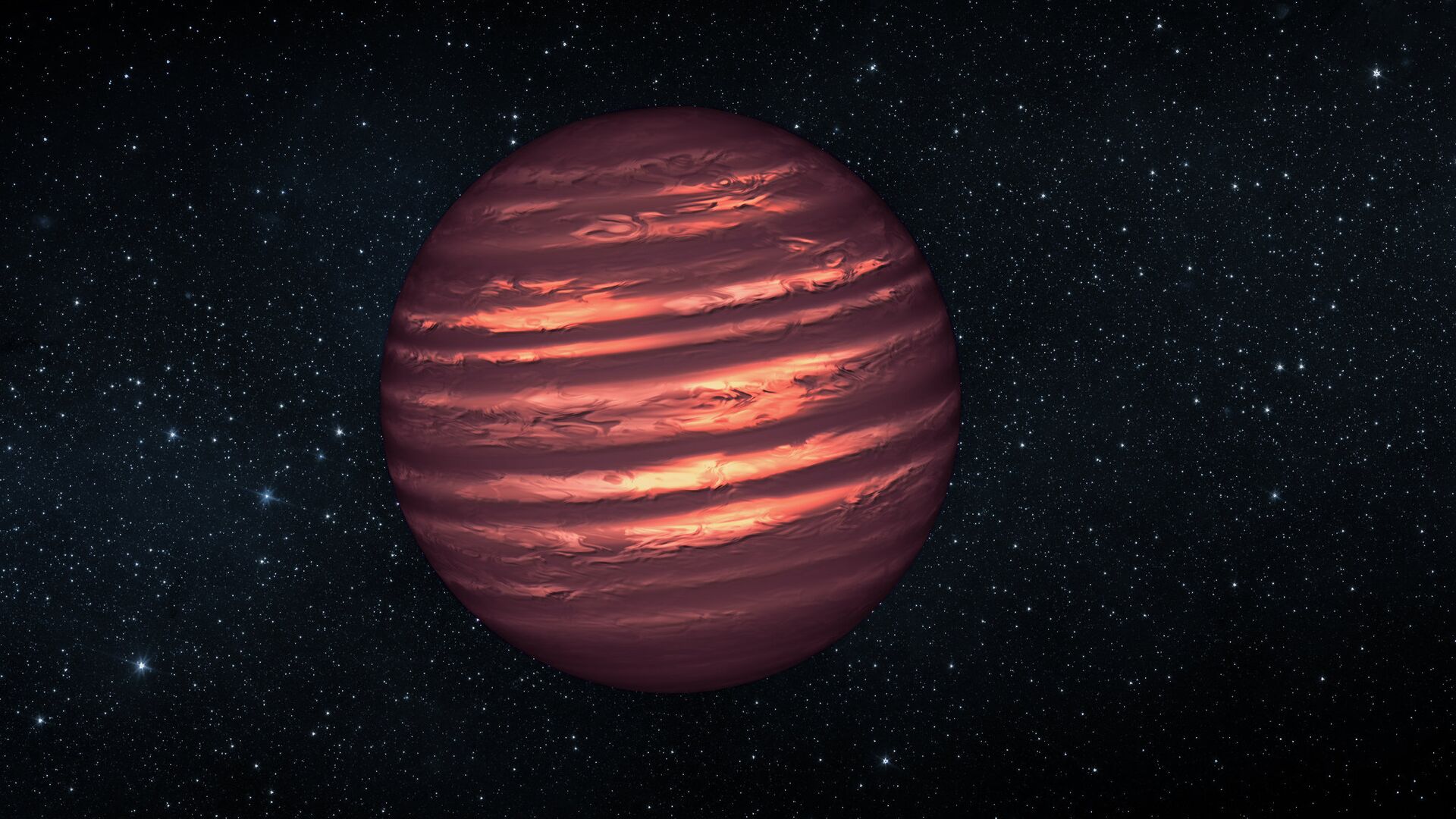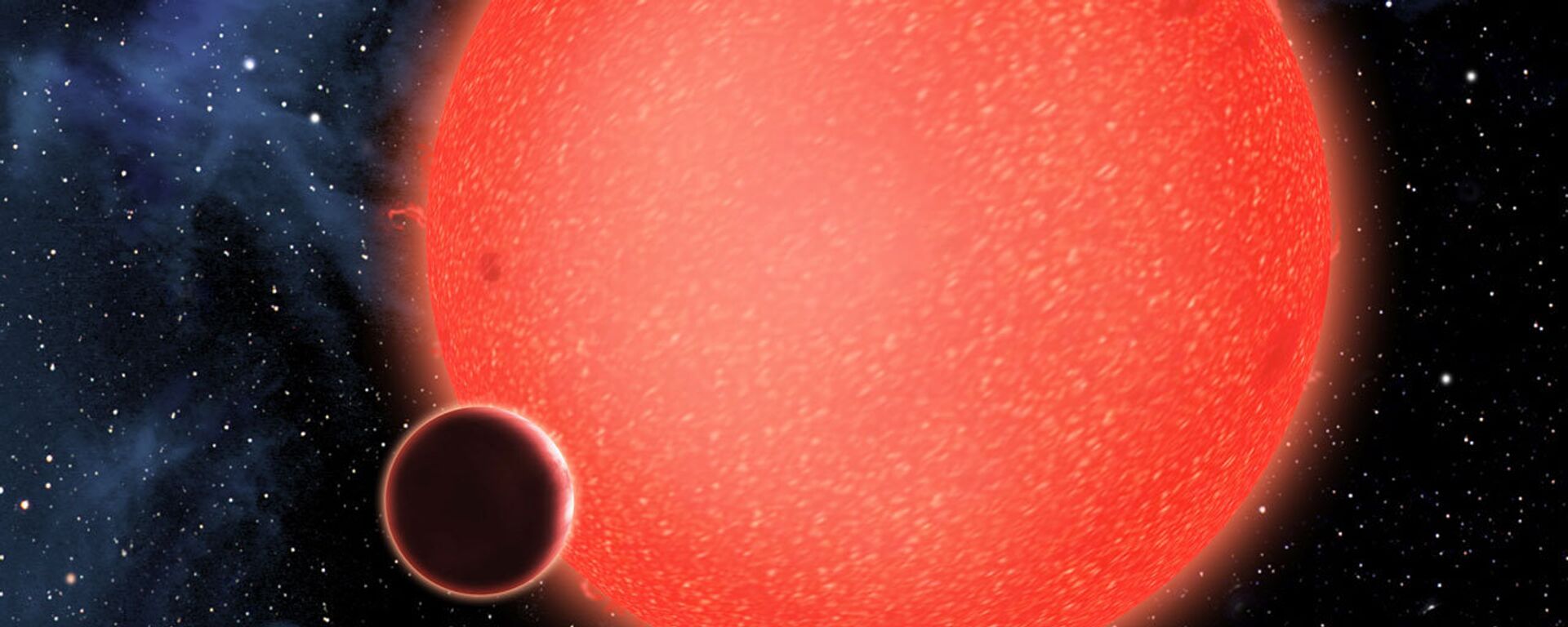https://sputnikglobe.com/20230530/up-to-one-third-of-planets-in-small-stars-goldilocks-zones-could-be-habitable-1110801847.html
Up to One-Third of Planets in Small Stars' 'Goldilocks' Zones Could be Habitable
Up to One-Third of Planets in Small Stars' 'Goldilocks' Zones Could be Habitable
Sputnik International
A new study has found that as many as one-third of planets found in the “goldilocks” zone around the smallest type of star are likely to be able to host life.
2023-05-30T21:04+0000
2023-05-30T21:04+0000
2023-05-30T21:04+0000
beyond politics
exoplanet
brown dwarf
star
astronomy
https://cdn1.img.sputnikglobe.com/img/102528/89/1025288942_0:0:2048:1152_1920x0_80_0_0_fddcdea4f6d62c96f52065df1f358fa1.jpg
Around each star in space, there is a distance at which the surface temperature on a planet is most likely to have water in a liquid state - that is, between 1 and 100 degrees Celsius - on its surface. Any planet orbiting at this distance, which is known as the "Goldilocks" zone because, like the temperature of the soup from the fairy tale, its conditions are "just right," would be capable of supporting life, assuming certain other factors don't also appear to create chaos.According to new research by a group of University of Florida astronomers, that’s likely the case on as many as two-thirds of planets found at that distance from their star. Their research is published in the Proceedings of the National Academy of Sciences (PNAS).That close to their star, planets are at risk of being subjected to extreme tidal forces by the star’s immense gravitational pull. It could cause earthquakes or volcanic eruptions and it could even cause the planet to become tidally "locked," with one side always facing the star and the other side always facing away. In addition, the planet could be bombarded with powerful solar winds and bursts from its surface. Life would likely not be able to develop in such environments, despite existing in the "Goldilocks" zone.Still, that means one-third of planets existing in that zone would be more stable, perhaps stable enough for life to evolve.Pulling on data from the Kepler telescope designed to spot exoplanets, Sagear and UF astronomy professor Sarah Ballard looked at a sample of more than 150 planets orbiting the smallest type of star - the brown dwarf. Also called "failed stars," these stellar objects are a little bigger than Jupiter but have 13 to 80 times the mass; still they lack sufficient mass to trigger nuclear fusion of hydrogen atoms into helium, which powers main-sequence stars like our own, and instead produce less heat and light by fusing deuterium and lithium.The duo looked at the eccentricities of planets orbiting those stars, since their habitable zone is so small that even slight deviations can cause devastating instabilities in climate.While the discovery opens up huge numbers of worlds to potential habitation by life, there’s still a lot of really weird planets out there where life could never survive.
https://sputnikglobe.com/20230514/stormy--steamy-glimpse-at-alien-planets-atmosphere-offered-in-study-1110341002.html
Sputnik International
feedback@sputniknews.com
+74956456601
MIA „Rossiya Segodnya“
2023
News
en_EN
Sputnik International
feedback@sputniknews.com
+74956456601
MIA „Rossiya Segodnya“
Sputnik International
feedback@sputniknews.com
+74956456601
MIA „Rossiya Segodnya“
brown dwarf; goldilocks zone; star; exoplanet; astronomy, how many habitable planets are there, is universe habitable
brown dwarf; goldilocks zone; star; exoplanet; astronomy, how many habitable planets are there, is universe habitable
Up to One-Third of Planets in Small Stars' 'Goldilocks' Zones Could be Habitable
A new study has found that as many as one-third of planets found around the smallest type of star are likely to be able to host life.
Around each star in space, there is a distance at which the surface temperature on a planet is most likely to have water in a liquid state - that is, between 1 and 100 degrees Celsius - on its surface. Any planet orbiting at this distance, which is known as the "Goldilocks" zone because, like the temperature of the soup from the fairy tale, its conditions are "just right," would be capable of supporting life, assuming certain other factors don't also appear to create chaos.
The bigger and brighter the star, the further that distance is, and the smaller and dimmer the star is, the closer this "Goldilocks" zone is to its surface. For the smallest stars, like brown dwarf stars, that is so close that other astrophysical issues can come into play.
According to new research by a group of University of Florida astronomers, that’s likely the case on as many as two-thirds of planets found at that distance from their star.
Their research is published in the Proceedings of the National Academy of Sciences (PNAS).
That close to their star, planets are at risk of being subjected to extreme tidal forces by the star’s immense gravitational pull. It could cause earthquakes or volcanic eruptions and it could even cause the planet to become tidally "locked," with one side always facing the star and the other side always facing away. In addition, the planet could be bombarded with powerful solar winds and bursts from its surface. Life would likely not be able to develop in such environments, despite existing in the "Goldilocks" zone.
Still, that means one-third of planets existing in that zone would be more stable, perhaps stable enough for life to evolve.
"I think this result is really important for the next decade of exoplanet research, because eyes are shifting toward this population of stars," said UF doctoral student Sheila Sagear, who co-authored the report. "These stars are excellent targets to look for small planets in an orbit where it's conceivable that water might be liquid and therefore the planet might be habitable."
Pulling on data from the Kepler telescope designed to spot exoplanets, Sagear and UF astronomy professor Sarah Ballard looked at a sample of more than 150 planets orbiting the smallest type of star - the brown dwarf. Also called "failed stars," these stellar objects are a little bigger than Jupiter but have 13 to 80 times the mass; still they lack sufficient mass to trigger nuclear fusion of hydrogen atoms into helium, which powers main-sequence stars like our own, and instead produce less heat and light by fusing deuterium and lithium.
The duo looked at the eccentricities of planets orbiting those stars, since their habitable zone is so small that even slight deviations can cause devastating instabilities in climate.
"It's only for these small stars that the zone of habitability is close enough for these tidal forces to be relevant," Ballard said.
While the discovery opens up huge numbers of worlds to potential habitation by life, there’s still a lot of
really weird planets out there where life could never survive.



